Quantum Workshop Speakers
Quantum Workshop Speakers
Tutorial Speakers
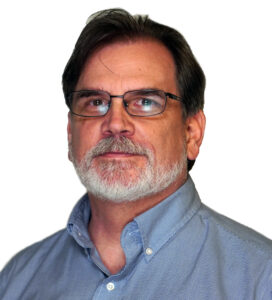
Greg Byrd
Professor, Associate Department Head, Electrical and Computer Engineering, NC State University
Bio
Greg Byrd is a professor and Associate Department Head of ECE at NC State. His research interests include quantum computing, computer architecture, and parallel systems. He is a co-author of Principles of Superconducting Quantum Computers (2022), and he was the general chair of the 2022 IEEE Intl. Conf. on Quantum Computing and Engineering.
Title: Introduction to Quantum Computing
This tutorial will introduce the fundamental concepts of quantum computing, primarily from a programming and algorithms perspective. Topics include quantum bits (qubits), superposition, entanglement, quantum gates and circuits, and some important quantum algorithms. Knowledge of quantum mechanics is not required, but familiarity with basic linear algebra (vectors and matrices) is helpful. Emphasis will be placed on topics that will be further explored during the rest of the workshop.
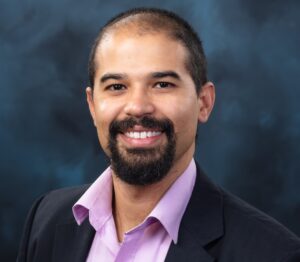
Daniel Claudino
Research Scientist, Quantum Computational Science Group and Quantum Science Center, Oak Ridge National Laboratory
Bio
Daniel Claudino is a research scientist in the Quantum Computational Science Group in the Oak Ridge National Laboratory and also affiliated with the Quantum Science Center, one of the five National QIS Research Centers. His main interests lie in quantum simulation, with focus on quantum chemistry, and various aspects of quantum software engineering, spanning simulators, frameworks, compilers, programming languages, and integration with high-performance computing. He is among the lead developers of the XACC quantum software framework and the QCOR quantum compiler.
Title: A crash course on quantum simulation of chemistry
Fundamental understanding of matter is at the heart of quantum simulation, with chemistry and materials anticipated as the first areas to showcase real-world benefit from quantum computers. Various chemical phenomena of interest are dictated by how electrons behave in molecules, which can be adequately understood by the formalism of electronic structure theory (term often used interchangeably with quantum chemistry). This will serve as the backdrop for an introduction on how to leverage quantum computers for chemical simulations. We will discuss the main ingredients that comprise the electronic structure problem and how they can be formulated in terms of basic operations on a quantum computer. We will then be equipped to review some of the most widely used algorithms of quantum chemistry relevance.
Plenary Speakers
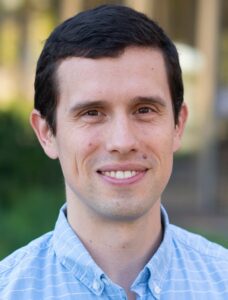
Norbert Linke
Assistant Professor, Duke Quantum Center and Department of Physics, Duke University, Durham, NC
Bio
Norbert M. Linke is an Assistant Professor of Physics at the Duke Quantum Center (DQC), Duke University, North Carolina, USA, working on quantum applications of trapped ions, including quantum computing. Born in Munich, Germany, he graduated from the University of Ulm, and received his doctorate at the University of Oxford, UK, working on micro-fabricated ion-traps and microwave-addressing of ions. He spent four years as a post-doc and research scientist in the group of Chris Monroe at the University of Maryland’s Joint Quantum Institute where he led a project that turned a physics experiment into a programmable quantum computer. He became an assistant professor at UMD in 2019 and transferred to the DQC in 2022.
Title: A trapped-ion quantum computer in user-facility mode
This talk will describe the development of an atomic physics experiment to a quantum computer. Our quantum system is based on a chain of 171Yb+ ions with individual laser beam addressing. This fully connected device can be configured to run any sequence of single- and two-qubit gates, making it in effect an arbitrarily programmable quantum computer. The high degree of control can be used for digital quantum circuits, but also for analog and hybrid quantum simulations, including quantum-classical optimization routines. We operate this machine in user-facility mode, working with many external collaborators and growing its capabilities with every new application. I will give some highlights and recent developments, including digital quantum simulations of lattice gauge theories, and the realization of multi-qubit gates.
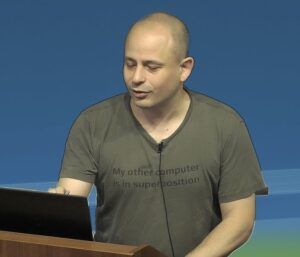
Nathan Wiebe
Professor, Computer Science, University of Toronto
Bio
Nathan Wiebe is a researcher in quantum computing who focuses on quantum methods for machine learning and simulation of physical systems. His work has provided the first quantum algorithms for deep learning, least squares fitting, quantum simulations using linear-combinations of unitaries, quantum Hamiltonian learning, near-optimal simulation of time-dependent physical systems, efficient Bayesian phase estimation and also has pioneered the use of particle filters for characterizing quantum devices as well as many other contributions ranging from the foundations of thermodynamics to adiabatic quantum computing and quantum chemistry simulation. He received his PhD in 2011 from the University of Calgary studying quantum computing before accepting a post-doctoral fellowship at the University of Waterloo. Wiebe currently holds a Joint Appointment in the High-Performance Computing group at PNNL and is an assistant professor of Computer Science at the University of Toronto. He is also the Software Thurst Lead of DOE’s Co-Design Center for Quantum Advantage (C2QA).
Title: Quantum Algorithm for Simulating Coupled Classical Oscillators
In this talk, I will describe a recent quantum algorithm (arXiv:2303.13012) for simulating the classical dynamics of 2^n coupled oscillators, for example, 2^n masses coupled by springs. The algorithm is based on a mapping between the Schrodinger equation and Newton’s equations for harmonic potentials such that the amplitudes of the evolved quantum state encode the momenta and displacements of the classical oscillators. When individual masses and spring constants can be efficiently queried, and when the initial state can be efficiently prepared, the complexity of the quantum algorithm is polynomial in n, almost linear in the evolution time, and sublinear in the sparsity. As an example application, I will show how to use the quantum algorithm to efficiently estimate the kinetic energy of an oscillator at any time, for a specification of the problem that we prove is BQP-complete. A related result shows that our quantum algorithm can solve an oracular problem related to the dynamics of oscillators exponentially faster than classical computers. Thus, the quantum algorithm solves a potentially practical application with an exponential speedup over classical computers. Under similar conditions this approach can also efficiently simulate more general classical harmonic systems with 2^n modes.
Invited Speakers
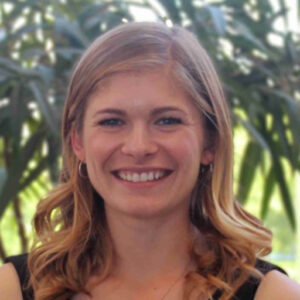
Kade Head-Marsden
Assistant Professor, Washington University in St. Louis
Bio
Kade Head-Marsden is an assistant professor of chemistry at Washington University in St. Louis. She received her B.Sc. from McGill University in Mathematics and Chemistry before receiving her Ph.D. from the University of Chicago in theoretical chemistry. Her research group focuses on developing methods to treat static and dynamic electronic structure using both classical and quantum mechanical computational resources.
Title: Noisy-Intermediate Scale Quantum Computers: A playground for quantum dynamics
Open quantum systems are ubiquitous in nature, but challenging to model due to the complexity of environmental interactions. While the idea of using quantum computing platforms to simulate these dynamical processes in either a digital or analog fashion has been around for decades, it wasn’t until recently that the hardware has become sufficiently accessible to verify these methods. Here, I will give an overview of recent developments in the field of quantum computation and algorithms for modelling the dynamics of open quantum systems, with an emphasis on digital simulation, or gate-based, techniques. This will include a brief survey of the field, an overview of dilation techniques, a discussion of a few open system algorithms, and their potential applications in chemistry, physics, and materials science.
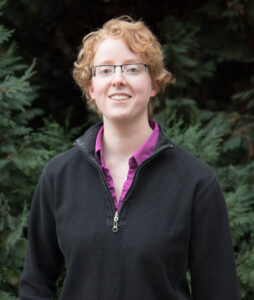
Natalie Klco
Assistant Professor of Physics at Duke University
Bio
Natalie Klco is a theoretical physicist at the interface of nuclear/particle physics and quantum information, developing both understanding in the quantum correlations of subatomic nature and applications toward improved computational processing. She earned her PhD with the Institute for Nuclear Theory at the University of Washington, supporting the subsequent creation of the InQubator for Quantum Simulation. After a postdoctoral fellowship in quantum field quantum simulation with the Walter Burke Institute for Theoretical Physics and the Institute for Quantum Information and Matter at Caltech, Dr. Klco is currently an assistant professor of physics at Duke University with connections to the Nuclear Theory Group and Duke Quantum Center.
Title: Calculating Nature Naturally: Quantum simulating (with) an entangled fabric
Toward the quantum simulation of Nature’s fundamental fields, we will discuss complementary routes for representing quantum fields on quantum computational architectures, reverberations of such decisions on quantum resources, and techniques for protecting symmetries during noisy dynamical evolutions in the lab. This will provide insights into how the naturally distributed entanglement in the simulated field can provide practical guidance toward quantum simulation (co)design, both for applications in fundamental physics and for large-scale, error-corrected quantum computations more broadly.
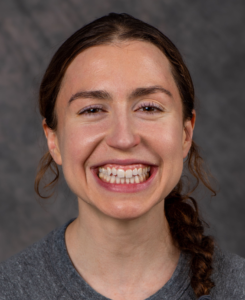
Katherine Klymko
NERSC Staff Member
Bio
Katie Klymko received her PhD in 2018 from UC Berkeley where she worked on the statistical mechanics of non-equilibrium systems using computational and analytical techniques. She was a postdoc at LBL from October of 2018 through September of 2021, working on a range of topics including fluctuating hydrodynamics/finite volume methods for modeling mesoscale systems and more recently quantum computing algorithms. Her work in quantum computing has focused on the development of efficient methods for eigenvalue calculations in molecular systems as well as quantum computing algorithms to explore thermodynamic properties. In October of 2021, she became a staff member at NERSC where she is working to integrate HPC and quantum computing.
Title: Quantum Computing from a NERSC Perspective
The National Energy Research Scientific Computing Center (NERSC) is exploring quantum computing as a means to enhance computational research capabilities alongside the development of our next generation of high-performance computing (HPC) machines. In this talk, I will outline NERSC’s quantum research and development collaboration with QuEra Computing, a company specializing in neutral atom hardware. I will describe two research projects initiated with QuEra: one focuses on investigating the ground state and phase transitions in the Lieb lattice, while the other explores false vacuum decay and nucleation. Both projects utilize analog simulations on QuEra’s 256 neutral atom machine, Aquila, as well as classical simulations on NERSC’s latest HPC machine, Perlmutter. We anticipate that these projects will yield insights into the potential of neutral atom quantum hardware to advance research in condensed matter physics.

Mario Motta
Senior Research Staff Member, IBM Quantum, IBM Research Almaden, San Jose, CA
Bio
Mario Motta is a Senior Research Staff Member at IBM Research, Almaden. He is a computational physicist with an interest in electronic structure, many-body quantum mechanics, and quantum information science. He joined IBM Research in 2019 as a Research Staff Member, after conducting postdoctoral research at the College of William and Mary and at the California Institute of Technology.
Title: Measurement-induced entanglement phase transition on a superconducting quantum processor with mid-circuit readout and cross-entropy benchmark
Quantum many-body systems subjected to unitary evolution with the addition of interspersed measurements exhibit a variety of dynamical phases that do not occur under pure unitary evolution. However, these systems remain challenging to investigate on near-term quantum hardware owing to the need for numerous ancilla qubits or repeated high-fidelity mid-circuit measurements, a capability that has only recently become available. Here we report the realization of a measurement-induced entanglement phase transition with hybrid random circuits on up to 14 superconducting qubits with mid-circuit readout capability. We observe extensive and sub-extensive scaling of entanglement entropy in the volume- and area-law phases, respectively, by varying the rate of the measurements. We address the issues of postselection and quantum tomography, representing the main computational bottlenecks of our procedure, by probing the phase transition with a cross-entropy functional comparing outcomes of mid-circuit measurements between Clifford and non-Clifford circuits. Using this mathematical framework, we observe a measurement-induced phase transition with hybrid random circuits on up to 22 qubits and vastly reduced quantum resources.
Mario Motta (1, presenter), Jin-Ming Koh (2), Hirsh Kamakari (2), Shi-Ning Sun (2), Jiace Sun (2), Tanvi Gujarati (1), Yaodong Li (3) and Austin Minnich (2).
(1) IBM Quantum, IBM Research Almaden, San Jose, CA 95120, USA
(2) California Institute of Technology, Pasadena, California 91125, USA
(3) Department of Physics, Stanford University, Stanford, California 94305, USA
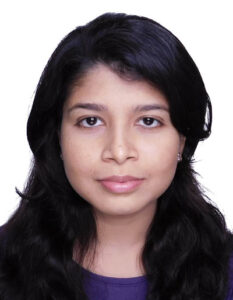
Priyanka Mukhopadhyay
Post-Doctoral Fellow, University of Toronto, Canada
Bio
She obtained PhD from the Centre for Quantum Technologies, National University of Singapore. She has been a post-doctoral fellow at the Institue for Quantum Computing, University of Waterloo, Canada. Currently she is a post-doctoral fellow at the University of Toronto, Canada. Her current research interests include quantum circuit synthesis and optimization, quantum algorithms and simulation.
Title: Quantum Simulation of the First-Quantized Pauli-Fierz Hamiltonian
We provide an explicit recursive divide and conquer approach for simulating quantum dynamics and derive a discrete first quantized non-relativistic QED Hamiltonian based on the many-particle Pauli Fierz Hamiltonian. We apply this recursive divide and conquer algorithm to this Hamiltonian and compare it to a concrete simulation algorithm that uses qubitization. Our divide and conquer algorithm, using lowest order Trotterization, scales for fixed grid spacing as $\widetilde{O}(\Lambda N^2\eta^2 t^2 /\epsilon)$ for grid size $N$, $\eta$ particles, simulation time $t$, field cutoff $\Lambda$ and error $\epsilon$. Our qubitization algorithm scales as $\widetilde{O}(N(\eta+N)(\eta +\Lambda^2) t\log(1/\epsilon)) $. This shows that even a simple partitioning and low-order splitting formula can yield, through our divide and conquer formalism, superior scaling to qubitization for large $\Lambda$. We compare the relative costs of these two algorithms on systems that are relevant for applications such as the spontaneous emission of photons, and the photoionization of electrons. We observe that for different parameter regimes, one method can be favored over the other. Finally, we give new algorithmic and circuit level techniques for gate optimization including a new way of implementing a group of multi-controlled-X gates that can be used for better analysis of circuit cost.
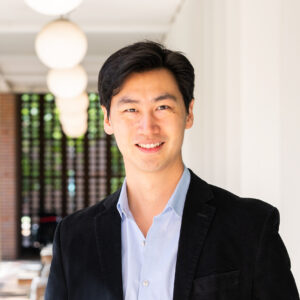
James Shee
Assistant Professor, Department of Chemistry, Rice University
Bio
James Shee was born in Portland, OR and grew up in El Dorado Hills, CA. He joined the faculty of Rice University in the summer of 2023 as a Norman Hackerman-Welch Assistant Professor of Chemistry. Prior to this appointment, he was a postdoctoral researcher at UC Berkeley working with Martin Head-Gordon. James received his Ph.D. in Chemical Physics from Columbia University in 2019, co-advised by Richard Friesner and David Reichman, and his A.B. in Chemistry from Princeton University in 2014. Among other professional recognitions, Professor Shee received the Ruth L. Kirschstein National Research Service Award from the National Institutes of Health in 2021, and the Louis Hammett Award for Excellence in Graduate Research from Columbia University in 2019.
Title: Bridging physical intuition and hardware efficiency for strongly correlated electronic states
A prominent goal in quantum chemistry is to solve the molecular electronic structure problem for the ground state energy with high accuracy. While classical quantum chemistry is a relatively mature field, the accurate and scalable prediction of strongly correlated states found, e.g., in bond breaking and polynuclear transition metal compounds remains an open problem. Within the context of a variational quantum eigensolver, we propose a new family of ansatzes which provides a more physically appropriate description of strongly correlated electrons than unitary coupled cluster with single and double excitations (qUCCSD), with vastly reduced quantum resource requirements. Specifically, we present a set of local approximations to the unitary cluster Jastrow wavefunction motivated by Hubbard physics. The local unitary cluster Jastrow ansatz removes the need for SWAP gates, can be tailored to arbitrary qubit topologies, and is well-suited to take advantage of continuous sets of quantum gates recently realized on superconducting devices with tunable couplers. The proposed family of ansatzes demonstrates that hardware efficiency and physical transparency are not mutually exclusive; indeed, chemical and physical intuition regarding electron correlation can illuminate a useful path towards hardware-friendly quantum circuits.
Contributed Speakers
Norhan Eassa
Title: Gibbs sampling via cluster expansions
Gibbs states (i.e., thermal states) can be used for several applications such as quantum simulation, quantum machine learning, quantum optimization, and the study of open quantum systems. Moreover, semi-definite programming, combinatorial optimization problems, and training quantum Boltzmann machines can all be addressed by sampling from well-prepared Gibbs states. With that, however, comes the fact that preparing and sampling from Gibbs states on a quantum computer are notoriously difficult tasks. Such tasks can require large overhead in resources and/or calibration even in the simplest of cases, as well as the fact that the implementation might be limited to only a specific set of systems. We propose a method based on sampling from a quasi-distribution consisting of tensor products of mixed states on local clusters, i.e., expanding the full Gibbs state into a sum of products of local “Gibbs-cumulant” type states easier to implement and sample from on quantum hardware. We present results for measuring both the dynamical structure factor and the specific heat of different Gibbs states of spin systems.
Efekan Kokcu
Title: A linear response framework for simulating bosonic and fermionic correlation functions illustrated on quantum computers
Response functions are a fundamental aspect of physics; they represent the link between experimental observations and the underlying quantum many-body state. However, this link is often under-appreciated, as the Lehmann formalism for obtaining response functions in linear response has no direct link to experiment. Within the context of quantum computing, and by using a linear response framework, we restore this link by making the experiment an inextricable part of the quantum simulation. This method can be frequency- and momentum-selective, avoids limitations on operators that can be directly measured, and is ancilla-free. As prototypical examples of response functions, we demonstrate that both bosonic and fermionic Green’s functions can be obtained, and apply these ideas to the study of a charge-density-wave material on ibm_auckland. The linear response method provides a robust framework for using quantum computers to study systems in physics and chemistry. It also provides new paradigms for computing response functions on classical computers. More details about the work can be found in arxiv: 2302.10219.
Dima Farfurnik
Title: Probing and enhancing the quantum properties of solid-state spins for quantum simulators
Optically-active solid-state spin qubits can offer opportunities to simulate a variety of physical problems. For example, the engineering of interacting spin ensembles can simulate many-body dynamics of highly entangled particles and contribute to sensing beyond the standard quantum limit. Furthermore, optically-active spins coupled to cavities can be used to realize interaction Hamiltonians that mimic the dynamics of interesting models in condensed matter physics such as the Periodic Anderson Model and the Kondo Lattice Model. However, the ability of optically-active spin qubits to function as robust quantum simulators strongly depends on the qubits’ decoherence due to their interaction with a noise bath that represents the environment. As such, the development of robust quantum simulators based on such qubits necessitates an efficient method for the characterization of noise baths that lead to their decoherence. In this talk, I will describe the experimental methods for characterizing and mitigating noise baths of solid-state spins by utilizing pulse sequences of coherent control. First, I will first present the experimental techniques for implementing pulse sequences that coherently control the quantum state of optically-active spin qubits. Then, I will discuss the recent utilization of such pulse sequences to perform the first all-optical noise spectroscopy of solid-state spins [1]. I will also describe a novel theoretical proposal for combining concepts of coherent control pulse sequences with compressed sensing to minimize the resources required for probing the spectral properties of noise baths [2]. Finally, I will demonstrate how pulse sequences of coherent control can be engineered to preserve arbitrary quantum states of solid-state spins [3], paving the way toward the development of robust quantum simulators.
[1] Nano Lett. 23 (5), 1781-1786 (2023)
[2] arXiv:2303.00909 (2023)
[3] Physical Review B 92 (6), 060301 (2015)
Poster Presenters
Maryam Abbasi
Title: Quantum simulation of parity-time symmetric systems with diagonal operators
Quantum simulation of quantum systems stands as a pivotal application in the field of quantum computation. However, the accurate representation of real quantum systems poses a challenge, given that most are open systems undergoing non-unitary processes. To capture the dynamics of non-hermitian systems, we must employ innovative simulation methods. In this presentation, I will talk about the implementation of singular value decomposition of the evolution operator for a Parity-Time symmetric system. This method requires dilation of the Hilbert space of the desired quantum system with only one extra qubit. I will demonstrate the scalability of this technique by applying it to two-level and three-level non-Hermitian systems on a real quantum processor.